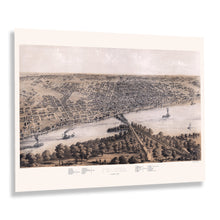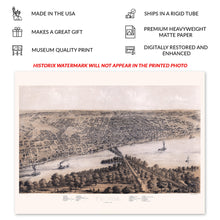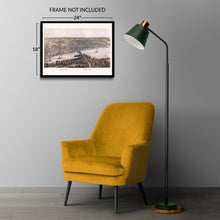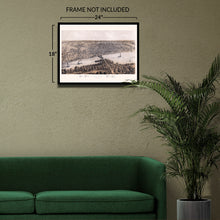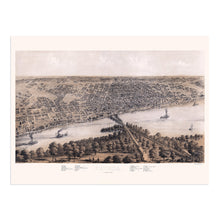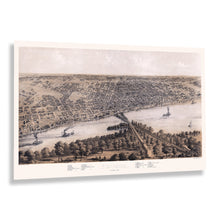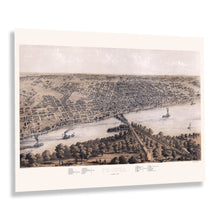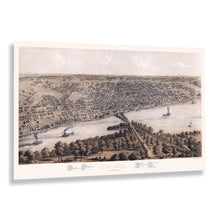
Feature Points
- VINTAGE MAP REPRODUCTION: You'll love this high quality historic reproduction of 1867 Peoria Illinois Map Poster. Our museum quality prints are archival grade, which means it will look great and last without fading for over 100 years. Our print to order maps are made in the USA and each map is inspected for quality. This beautiful artwork is a perfect addition to your themed decor. Vintage maps look great in the home, study or office. They make a perfect gift as well.
- MUSEUM QUALITY: This high quality map print will be a great addition to your vintage-themed wall. Don't waste money on cheap-looking, thin paper posters. We use thick, fine art print quality matte paper. Our professional's choice matte paper displays artwork in high detail without glare. The color is vibrant and text is easy to read. When framed, this map looks absolutely stunning.
- A LOOK BACK AT HISTORY: This is an impressive, historic reproduction of 1867 Peoria Map of Illinois Wall Art. A true piece of history. See our product description section for more fascinating information about this historic map and its significance.
- READY TO FRAME: This print includes a 0.2 inch border for a perfect frame fit and look. Our maps are designed to fit easy-to-find standard frame sizes, saving you money from having to pay for a custom frame. Each map is inspected for quality and shipped in a rigid tube.
- HISTORIX: We love history and art. Sometimes old maps have tears, folds, separations and other blemishes. We digitally restore and enhance maps while keeping its historical character. All our maps are proudly made in the USA. Customers all over the world love our vintage maps and we know you will too.
Additional Information
Peoria is the oldest European settlement in Illinois, and its rich history dates back to 1680 when French explorers ventured up the Illinois River from the Mississippi River and discovered fertile lands on the banks. They established small camps which would grow into what is now modern-day Peoria, a medium-sized city with a distinct history and culture that is depicted in this bird's eye perspective by Prussian-born cartographer and lithographer Alber Ruger. Ruger was an early pioneer of the form and remains one of the most influential figures in the history of nineteenth-century American cartographical development.
His works bear a unique style and distinctive aesthetic that would influence numerous American cartographers who would continue to produce panoramic maps until the 1920s. Ruger's bird's eye perspectives were designed to attract residents and merchants alike and served as marketing materials to promote prominent civic features, educational institutions, religious communities, as well as natural enticements. Produced only two years after the conclusion of the American Civil War, this depiction of Peoria shows the city in a period of considerable growth as Southern Americans flocked to the Midwest, eager for economic opportunities in new mills and manufacturing facilities as the industrial revolution continued to expand across the United States.
The distinctive aesthetic and unique style of panoramic maps immediately transports the viewer back in time, creating a link between the present and the past. Peoria maintains a diverse history and has remained one of the most iconic cities in the American Midwest.










